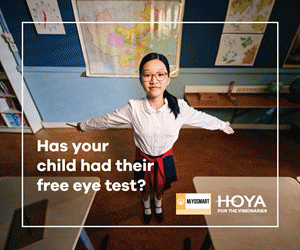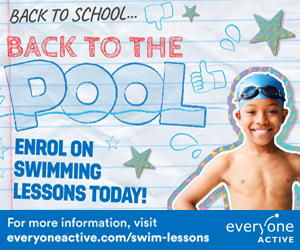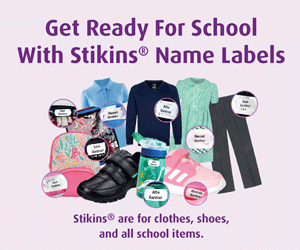Primary Times - the definitive what’s on and where to go family guide of activities and events for children of primary school age. Things to do with your kids during the school holidays including arts and craft activities, music and theatre for children, parties, competitions, days out, and family attractions along with term time drama schools, dance classes, after school clubs and sports activities. Things to do at a place near you!
Ski-ing and Ice-skating for Children, Norfolk
Although it causes chaos, a mass flurry of snow whips up a wonderfully white dream for many  children.
children.
Whereas adults may appreciate the serene beauty of snow, they’re quickly reminded of its inconvenience - for children, on the other hand, snow equals hours and hours of swooshy, swishy fun times!
Depending on your viewpoint, if the UK is fortunate (or unfortunate!) enough to receive large quantities of snow this forthcoming winter, how do you plan to enjoy it? If there is a distinct lack of snow this winter, what activities are around that artificially imitate its effects?
Before we investigate that, we’ll take a brief look at how snow sport activities can be hugely beneficial to a child...
Snow sports...the benefits....png)
Like any form of outdoor education, snow sports nurture a positive attitude towards challenge and adventure. Most snow and ice sports test an individual’s ability - the challenge is to push one’s own boundaries, to assess risk and progress at one’s own pace.
Yet, they are also very social and fun activities, enjoyed by all generations making them terrific sports for families to do together.
Childhood is a superb time to learn a winter sport as kinaesthetic ability to learn new techniques is very high when one is young.
Children are also used to learning, making them incredibly receptive. In particular, skiing, snowboarding and ice-skating offer fresh slippery challenges...
Skiing
Although it is fabulous fun, skiing is rather an expensive hobby and for many money-watchful families it may be the ski holiday that is sacrificed this year to accommodate the payments for life’s necessities.
necessities.
Yet, thankfully there are alternatives closer to home that will equal the thrill of whizzing downhill on two skis.
Ski sessions at UK artificial slopes can provide a perfect introduction to the sport, whether in preparation for a foreign ski holiday or whether you just fancy a go.
If you are prepared for a trip, the slopes in Scotland when covered in snow are as good as it gets, or alternatively the snow domes that are dotted around the UK create a perfect indoor winter wonderland environment complete with real snow. You can find the nearest ski slope to you by visiting www.skiclub.co.uk
If you are lucky enough to afford a frosty holiday in the snow, then the classic winter playground is always found at any ski resort.
When selecting your resort assess its piste map to work out the number of beginner slopes available and also check out the proximity of your accommodation to the bottom of the chair lifts or ski school.
It would be wise to whittle down your choice to a resort that ideally offers wide open slopes, a
 number of play parks, and alternative snow activities such as floodlit tobogganing, dog sledging or ice-skating.
number of play parks, and alternative snow activities such as floodlit tobogganing, dog sledging or ice-skating.
Teaching a child to ski is quite a challenge and it will usually take around four days until they start to gain control – but then watch out – given half a chance they’ll fearlessly whizz down those slopes in the blink of an eye!
Many families decide a good balance is to sign their children up to half day sessions with a ski school in the mornings, then ski as a family in the afternoons. It is helpful to pre-assess any ski school at your chosen resort to discover if they teach in English and to find out groups sizes.
Also, consider your child’s abilities – is he or she confident enough to be left alone with relative strangers and can he or she physically handle skis, goggles and boots?
What children should wear when skiing or snowboarding...

Wrap up a child so they are dry and feel warm. There’s nothing worse than venturing onto the slopes only to be greeted by a disgruntled child who is feeling too cold.
Layering is the key; thermals provide an ideal base layer which should be followed by soft breathable cotton or fleece clothing. Salopettes with braces can pose a problem for children, especially at toilet breaks so many people favour a separate ski jacket and trousers.
Ski gloves or mittens are essential, safety helmets are always recommended and in some countries such as Norway, Italy and Austria it is compulsory for children to wear a helmet.
To protect the eyes, goggles are considered cool and are a more practical form of eyewear than sunglasses. Finally, a high SPF sun cream and lip balm is a must!
Snowboarding
Whizzing down a slope doesn’t have to happen on two skis – it can happen on one board too!

Skiing’s younger cousin, snowboarding, is enormously popular with young people, and with its cool alternative freestyle approach it challenges skiing as a favourite winter sport.
Despite its young audience, it’s worth noting that many resorts don’t offer snowboarding lessons to children until they are at least eight years old, and in some resorts this age limit is even older.
So if are you looking solely for a snowboarding holiday with the family it will pay to do your research beforehand, to find out at what age snowboard lessons start at your chosen resort.
As for the ongoing argument as to which sport is better – skiing or snowboarding – it is totally an individual preference. Children may prefer snowboarding due to the soft easy feel of snowboard boots that are much less rigid than ski-boots, yet they may feel frustrated at having to fasten the bindings at the top of each slope whilst their skiing friends are able to whizz straight off the chair lift at the top of the slope.
In the UK, snowboarding lessons are taught at a number of ski centres but again, always check with your local centre beforehand as many do not teach snowboarding to children under the age of 10. To find out more details on snowboard slopes go to www.skiclub.co.uk
Ice skating
So great is ice-skiing’s appeal, it is now common for big shopping malls, city centres and some tourist attractions to freeze a section of their land to create a purpose-built ice rink, making this fun icy activity easily accessible for more people.
Ice-skating has a massive social appeal that often gets people giggling at their lack of ability! Many children simply love to skate as it gives them a new sense of freedom to experience new sensations such as gliding and spinning.
Ice skating also offers a number of other benefits such as a superb cardiovascular workout, it improves balance and co-ordination, builds endurance and provides a chance to choreograph movements and be creative.
If your child would like to take their skating ability one step further, then Skate UK offer an 8 part ‘Learn to Skate’ programme. To find out more call 0115 9888060 or go to www.iceskating.org.uk.





